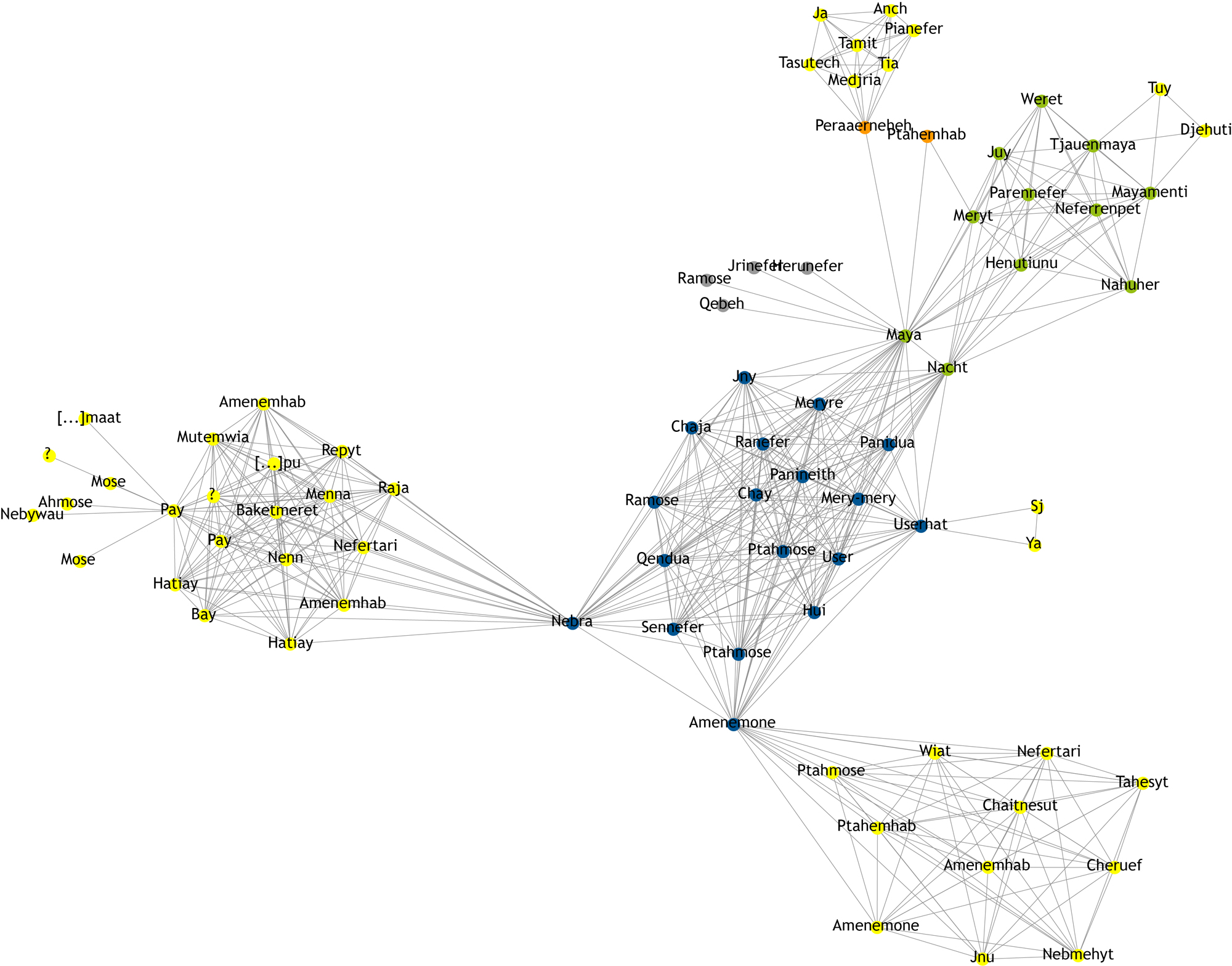By evaluating and comparing all prosopographic data of a person’s social environment, the aim of this Ph.D. research project is not only to shed light on the identity of the individual but especially on the reconstruction of social interrelations within a whole network of persons. The Social Network Analysis (SNA) forms the methodological framework.
Research
The archaeological remains of the royal residential city of Memphis gained a particular prominence which goes far beyond the boundaries of Egyptology, especially due to the royal pyramid-complexes. But although the scientific discussion about the site and its monuments forms an independent research focus, the archaeological legacy of the New Kingdom (1550 – 1070 BC) remained uninvestigated for a very long time. Only in 1975 the Egypt Exploration Society in cooperation with the Leiden Museum initiated the systematic documentation of Elite tombs dating to the New Kingdom. The private monuments eventually revealed a multiplicity of prosopographic data. Relevant texts and inscriptions are to be found on the walls of the tombs as well as on different types of objects, which originally were part of the tomb’s equipment. Their purpose and function is to document a person’s collective relevant information and to spread and to maintain this information within a bigger social context. That is why it is the aim of this dissertational project to attain a regional prosopography for the whole New Kingdom which is for the first time not limited to specific groups of people, but illuminates all identifiable social classes of the Memphite society.

(Click to enlarge) Pilot case network of king’s treasurer Maya. Network graph created by Gephi | Author: Anne Herzberg
As a first step towards this aim the compilation of epigraphic material was begun, alongside the creation of a prosopographic database which contains now 1896 persons and 1443 objects. Due to the cooperation with different museum collections in Germany, UK, USA and Italy the data will be gradually completed by collating hieroglyphic inscriptions and analyze its prospographic information. The cooperation was not merely limited on written exchanges, but included research visits in Leipzig (October 2015), Hanover (December 2015), Bologna and Florence (June 2016).
The Social Network Analysis (SNA) forms the methodological framework of this project. By its application, a person is no longer defined as an isolated unit but as an individual who is acting with other people on a social level. Due to this phenomenon individuals can be assigned to certain groups of persons by specific parameter. Those are defined by social and genealogical affiliations, gender, institutional or professional background and geographic origin.
Taking part in a hands-on workshop “From Papyri to Spaghetti Monsters: Networks Al Dente” held at the University of Leiden (October 29-31, 2015) by Yanne Broux (Leuven) and Silke Vanbeselaere, MA (London), provided the basic knowledge of the application of SNA Software so that this method can be applied within this research project.
First results
A first pilot case network of the king’s treasurer Maya has already been created and presented at the conference “Altertumswissenschaften in a Digital Age“. The most striking advantage of SNA was recognizable at a first glance: by using SNA the Memphite society is no longer understood as a mere sequence of individuals and their direct relatives, as it is the case in family trees, but connects individuals affiliated to different families, professional areas and social classes.
This Ph.D. thesis is written within the program “Ancient Languages and Texts” (ALT) of the Berlin Graduate School of Ancient Studies (BerGSAS).
